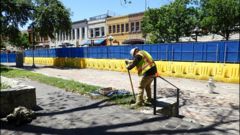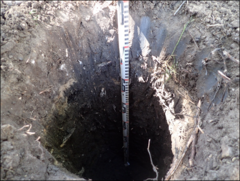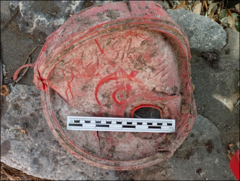Archaeological investigations of Phase I kicked off with a site walkthrough of the project area and shovel testing to determine if there were any significant deposits within the planting beds. A shovel test is a round hole that the archaeologists dig in 3.9 inch layers. Each layer of dirt is screened through a ¼-inch wire-mesh screen to collect artifacts. The archaeologists fill out a form for each shovel test that describes the dirt, artifacts and any other interesting factor about the test pit. This allows the archaeologist to look at the data and determine if there is a potential for encountering an important feature.
The archaeologists from Pape Dawson were able to excavate 28 shovel tests within the project area. Most of these were excavated to depths of 23.6 to 31.5 inches below the surface. The archaeologists encountered many tree roots and irrigation lines. The materials that were encountered were modern, including a 2019 penny and a plastic 5-gallon bucket lid. No significant features or deposits were identified during this portion of the investigation.
Later, the archaeologists will return to the project area when the contractors begin there relocation of underground utilities.





